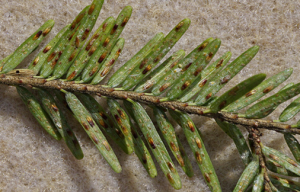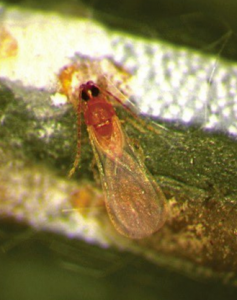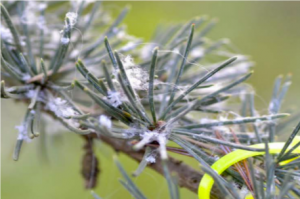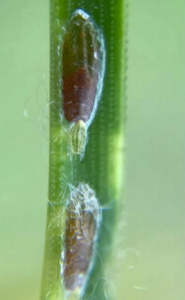Every year, over 30 million Christmas trees are grown and harvested across 350,000 acres in the U.S. In fact, Americans spent upward of $2.04 billion on Christmas trees in 2016 alone.
While purchasing a fresh, live tree this holiday season, make sure to source your Christmas tree from local farms when possible. Locally sourcing your Christmas tree not only supports farmers in your surrounding community, but promotes the expansion and sale of native conifers such as the Southern red cedar (Juniperus virginiana), Virginia pine (Pinus virginiana), sand pine (Pinus clausa), and spruce pine (Pinus glabra). These can even be purchased as potted Living Christmas Trees, kept indoors for the holiday, and later transplanted into your home landscape.
Equally important, it helps limit the spread of out of state pests such as the elongate hemlock scale (Fiorinia externa), which is profoundly established in northeastern areas of the U.S. that produce and ship True (Abies sp.) and Douglas fir (Pseudotsuga menziegii) Christmas trees.

Introduced to the U.S. from Japan, the elongate hemlock scale has fortunately not yet been detected here in Florida. Still, concerns remain regarding the spread of this pest through the shipment of Christmas trees from out of state.

They use their piercing-sucking mouthparts to feed on the underside of the needle-like leaves of these conifer trees, leading to a yellowing, mottled appearance and eventually leaf drop.
Male elongate hemlock scales are around 1.5 mm long, white and threadlike in appearance, and develop wings at full maturity. On the other hand, females are dark brown and will never develop wings, typically producing 12 to 20 eggs at a time and remaining stationary. As the eggs hatch over the course of a few weeks, the first instar stage or ‘crawlers’ become mobile. These crawlers are yellow in color and eventually begin producing a waxy coating.
Of course, it’s important to keep in mind that it can take anywhere from 3 to 8 years to grow a commercially viable Christmas tree. Therefore, it is of no surprise that some insects will hitch a ride indoors alongside your tree. Other common pests may include spiders, praying mantids, mites, aphids, and other scale insects, to list a few. While many of these pests may seem alarming at first glance, most are not a concern and can be easily removed.



For more information on the Elongate Hemlock Scale and Managing scale insects on ornamental plants.
If you suspect you have found the elongate hemlock scale or have questions or concerns regarding this pest, contact FDACS-DPI at 1-888-397-1517.
For more information on local Christmas tree farms here in Florida, visit the FDACS Christmas Tree Farms, Florida Christmas Tree Association, Christmas Tree Promotion Board, and the National Christmas Tree Association websites.
 0
0
